
19 Mar Rita Moreno Off-Screen: An Interview with the Puerto Rican Women Behind the Intimate Documentary
BY KRISTAL SOTOMAYOR
While Latinx stories and characters in cinema continue to be depicted through racist stereotypes, we take a deep dive into the films and filmmakers re-framing Latinidad through the column Cine alzando voz, meaning “Cinema raising its voice.” Through thoughtful critique and insightful interviews with Latinx artists, Cine alzando voz interrogates important issues in Latinx cinema such as queerness, womanhood, identity, immigration, and more.
The American Masters documentary Rita Moreno: Just a Girl Who Decided to Go for It, directed by Mariem Pérez Riera, paints a detailed picture of icon Rita Moreno’s background, challenges and successes. Using a combination of interviews, verite footage, archival photos and videos, and paper doll animation, Pérez Riera provides new insight into Moreno’s life. The film outlines Moreno’s career, spotlighting the different films she has worked on and how they relate to her personal life offscreen. Powerful moments in the film include intimate interviews with Moreno where she opens up about her experiences with sexual assault, racism, and sexism in Hollywood. Yet, despite all of the challenges Moreno has faced, she stands tall as an activist during the civil rights and women’s rights movements. Through the metaphor of the paper doll, Pérez Riera is able to deconstruct the story of Rita Moreno and offer a new understanding of the woman off-screen.
Puerto Rican filmmaker Mariem Pérez Riera is best known for directing the film Maldeamores / Lovesickness (2007) and the TV series Chamacas (2013). In 2016, she co-directed the TV documentary De Puerto Rico para el Mundo (2016) about the experiences of many famous Puerto Rican artists which included an interview with Moreno. Pérez Riera is the daughter of acclaimed Puerto Rican musician, writer, comedian and host Silverio Pérez. She is also the mother of Marcel Ruiz, the actor that portrays Alex Alvarez in the Netflix series One Day at a Time, in which Rita Moreno stars as the grandmother.
The team of Rita Moreno: Just a Girl Who Decided to Go For It is primarily made up of artists from Puerto Rico including Producer Ilia J. Vélez-Dávil, who worked as Associate Producer on Nuyorican Básquet (2017) and Maldeamores / Lovesickness (2007). Vélez-Dávil is a longtime collaborator and friend of Pérez Riera. The collaboration between these two talented Boricuas brings an added intimacy and nuance to the film Rita Moreno: Just a Girl Who Decided to Go for It.
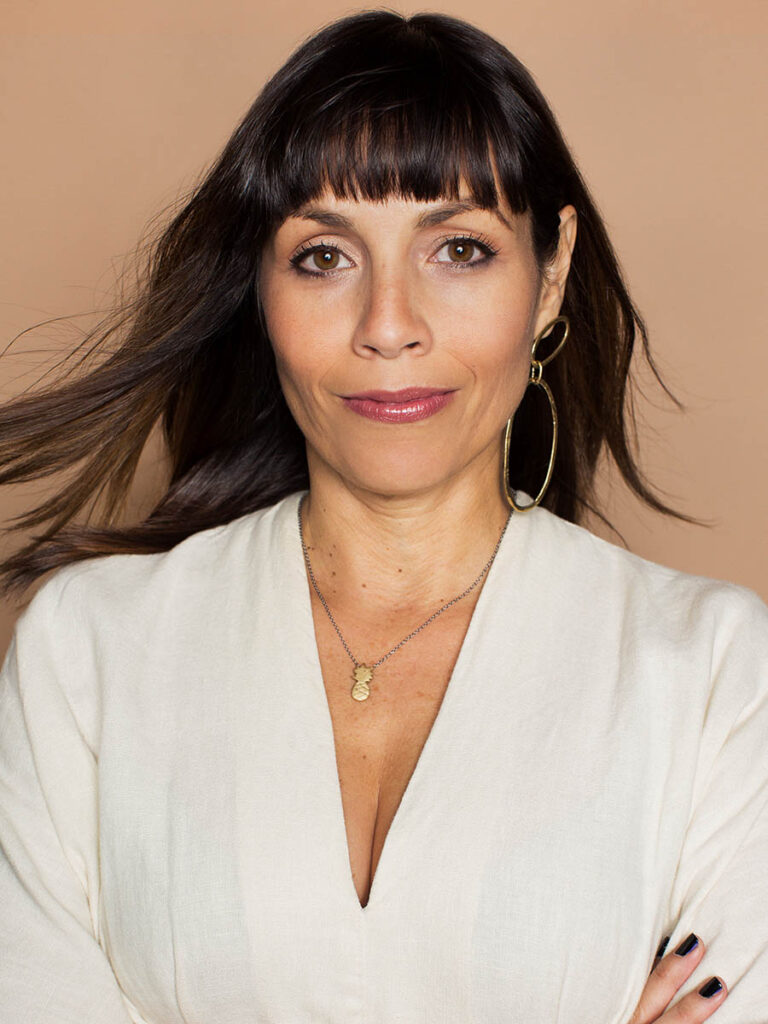
As part of the 2021 Sundance Press Inclusion Initiative, I interviewed director Mariem Pérez Riera and producer Ilia J. Vélez-Dávil during the Sundance Film Festival.
Kristal Sotomayor (KS): How did you get started on this project?
Mariem Pérez Riera (MPR): The project began with Brent Miller who is the producer of the show One Day At A Time, which Rita is a part of. He is the one who, after meeting Rita on the set, and spending a year with her on the first season of One Day At A Time, he realized that nobody has made a documentary on her. He couldn’t believe it and decided he wanted to make one. After that, he started looking for directors to pitch ideas for the documentary and I was one of them. That’s how I got involved in the project. And then, Ilia Vélez has been producing with me on many projects since my first feature. I called her when they gave me the news that I was going to be the one telling Rita’s story and I said, “I need you with me.” And that’s how two Puerto Ricans came in this project.
KS: What does Rita Moreno mean to you as filmmakers, women, and Puerto Ricans?
MPR: West Side Story was the first film I saw of Rita. I already knew when I saw that film that she had won an award, an Oscar. And I knew that she was the only Puerto Rican who had achieved that accolade. Rita was part of my upbringing, in terms of an icon who you would look up to. And, because I studied filmmaking, she was also someone, for me, that was important because I would see her as something I could reach when I wanted to be able to work in film. Actually, in my first feature, when we were writing the script, we would always think of Rita as one of the characters. We would always think it’s as if this woman was Rita Moreno. She has been an inspiration for forever and to have the opportunity to tell her story was very honoring for me. This film has been our baby for these past three years. We really put a lot of effort into it because we knew how important she is for us as Puerto Ricans and as filmmakers. So we did it with a lot of gratitude.
Ilia J. Vélez-Dávil (IVD): Being from an island, this is an island full of talent. Talent that has been well recognized around the world. In film particularly, we have a few icons that we look up to and that we aspired to be. Rita is that great Puerto Rican artist that made it in so many ways. Plus, she’s always felt very proud of being Puerto Rican. She always carried the flag with her wherever she went. In the documentary, you see, when she was young, carrying her child, she would tell people that they should be proud of being Puerto Rican. When we started on this road of filmmaking, she was someone we aspired to become in terms of the achievements and the road she traveled. It was a dream being part of this project but, at the same time, I felt from the beginning a great sense of responsibility for telling her story. Our main task here was being truthful and telling the best story.
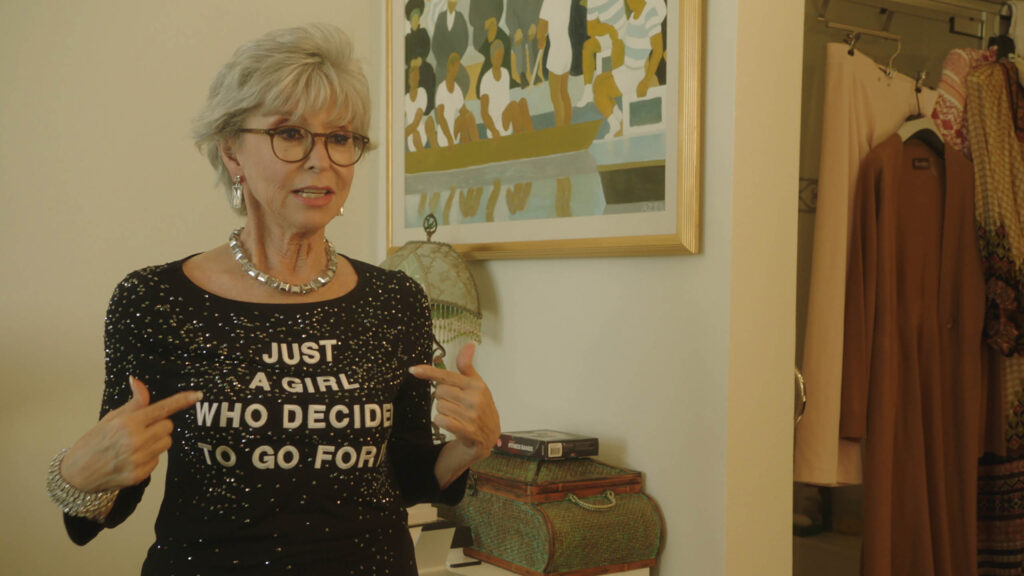
KS: How did you get Norman Lear and Lin-Manuel Miranda to join the team as Executive Directors?
MPR: Brent is a producer on One Day at a Time and he works as partners with Norman Lear. Act III Productions is Norman Lear’s production company so that is why he is part of the team because he is the one who, with Brent, decided to make this project and to back it up. Because Lin-Manuel Miranda is a good friend of Rita, Brent reached out to him to see if he also wanted to be part of the project. And, of course, he said yes; it was a no brainer. I would add also that Brent went right away to try to sell this project to American Masters for PBS. Michael Kantor is the Executive Producer of American Masters and was eager to join in from the very beginning. I think it was a no brainer for everyone who was invited to the project.
KS: How did you get access to the archival footage? There was some really amazing archival footage of Rita Moreno with Martin Luther King, Jr. I never knew that Rita was so politically active.
MPR: I started reading her book, Rita Moreno: A Memoir, and researching about her to see what was important to tell about her story. Through her great autobiography, I was able to know all of this. After that, we decided to find different themes and we found five to seven major themes that we wanted to put in the movie. One of them was to show her as an activist, because that’s an important part of her life. It is also what makes her very special because even though she didn’t go to high school–she dropped out of high school–she’s a very intelligent, smart woman. I think activism is part of her journey and part of who she is today. She has no problem with being outspoken. With that in mind, we needed to find all the footage and we had an amazing team of archival producers who were behind it and who got everything that we needed.
IVD: Yes, we had Archival Producer Rebecca Kent and Archival Clearances/Associate Archival Producer Roberta Helling, two very experienced producers that were very involved from the beginning and were incredible. They found material that was very hard to get. Also, the development producer helped us gather material from Rita’s home. Rita has an incredible archive at her house from videos to photos, it’s incredible. [The development producer] dug in all of that material together with Mariem and she was another huge help in this process.
MPR: We went to Rita’s house and basically stripped her house out getting pictures and videos. She had a whole box of super 8 and super 16 footage that wasn’t digitized. We digitized everything and we found amazing stuff there. It’s not in the movie but even all the music sheets from West Side Story and from other musicals that she worked on. She has all of the actual music written for her. That’s amazing!
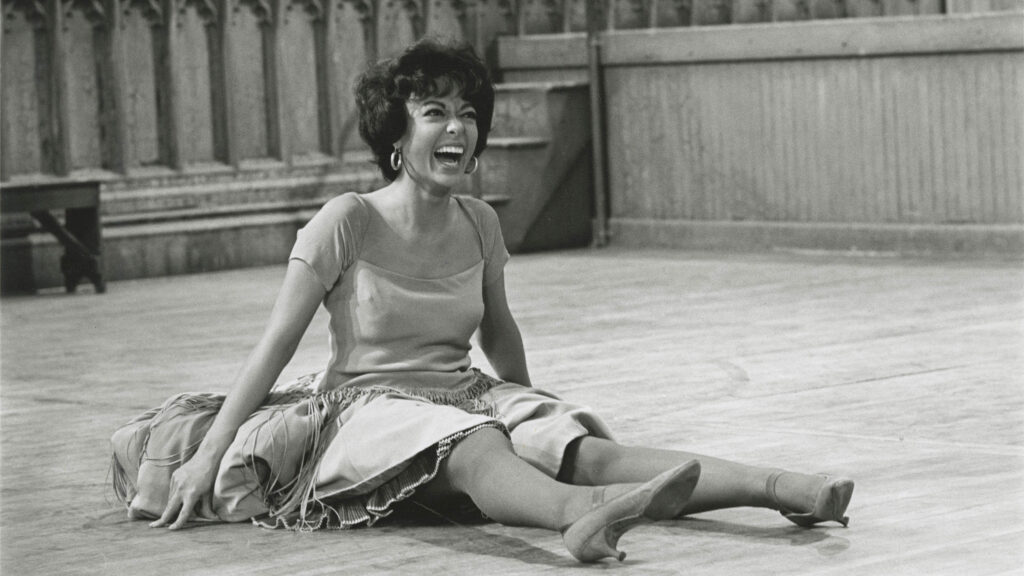
KS: How did you go about deciding on the paper doll animation?
MPR: Yes, so that was part of my pitch at the beginning. I realized that, for a long time, Rita was the doll for everyone, starting with her mom who was a seamstress. Her mom would dress her up for all the different performances that she would do since she was a little girl. I think that, for the longest time, she was always pretending to be someone she wasn’t by dressing up to be whoever everyone else wanted her to be. That was part of my pitch because I wanted to also show that fragile little girl that was not showing her real self but was always pretending. Also, I used to play with paper dolls and I know that Rita did too because that was part of that era. It was something that I really visualized from the very beginning. I also wanted it to be stop motion animation and Quique Rivera, who’s Puerto Rican, is a very talented stop motion animator who was on board with it from the very beginning. We created the dolls based on pictures that we had of Rita and based on dresses that she had worn in the past. So all the dresses that you see and all the faces of Rita from a little girl until now, we went through a process of pictures of her outfits throughout her life that we gathered and we chose. She loves it. She loves the animations.
IVD: Rita has been saying over and over that she loves the dolls. A nice anecdote is that the day I met Rita for the first time was the meeting where Mariem was pitching the idea of the animation. Rita is a tough cookie because she’s smart and you really have to sell the idea. I was very nervous and Mariem was too. And she did such a great pitch that Rita bought it right away. She wasn’t hesitant or anything. She’s very happy that she did it because she loves it.
KS: How did you go about balancing all of the elements (interview, verite, archival, and animation) in the film?
MPR: I think we did a great job in the pre-production moment in developing this story. We had it very clear that we wanted to have animation, archival, interviews, and verite footage. So those elements were already important in our film, the four different ways that we were going to tell the story. We would have these different topics on a board and, under it, we would say we need to shoot this, we need this type of archival, we need these people to talk about this. We had all of that pretty much organized and also with animation and how we were going to balance it. The post-production process, of course, that’s where everything came through. I think Kevin Klauber, the editor who co-edited the film with me, was amazing. When I started editing the film on my own, he came in with fresh eyes and a fresh way of seeing everything. He helped me so much with interweaving and balancing everything. Sometimes, when you would see the edit on the rough cut, everything was like on one side or the other. We were able to finish after like eight months of editing. At the end, that’s how it came out but it was a long editing process.
KS: How did you navigate talking about heavy topics like sexual assault and difficult relationships?
MPR: Rita knew that we wanted to make a documentary on her. She was willing to be open because she didn’t want this documentary to be a biopic about just a reel on her success. She’s seen so many documentaries that are just that. You always see the person with makeup and everything is great. We didn’t want that. She didn’t want that either because she’s a great cinephile. So Brent, who has a very close relationship with her, made sure that she knew that we were going to ask tough questions and that we want her without makeup and that we wanted to be able to follow her around. She was willing to do that. Of course, the day that we had to ask those tough questions, we were so nervous. Ilia and I knew the questions that we were going to ask, so we were nervous, because she’s also a tough woman. And if she didn’t want to answer, I have no idea what we would have done because I needed those answers. I didn’t know what I was going to face but she was very kind and opened herself to answer everything. Also sometimes I would ask her questions from my perspective. I would say, this happened to me, and then I would ask a question and I think that helped her. I think because she’s very humble and she also wants to always help, she would answer things from wanting to tell me her experience so that I could learn, or at least that’s how I got it. It was like a therapy session with her. I have to also add that we had a great team behind the cameras, mostly Puerto Ricans. So the fact that we were Puerto Rican and talking in Spanish, that soothed her and that made her feel so much warmth in her heart because she was listening to her family, to Puerto Rico, to her upbringing. It made her be more open to us and more comfortable with us.
IVD: The way Mariem planned the questions was in a progress of toughness or profound questions. She started with more light questions on the first day and we had some months in between the first interviews and the last ones. The toughest questions were asked on the last day so by then we’d spent many days shooting in her house in New York so she felt very comfortable, or as comfortable as she could be answering such questions.
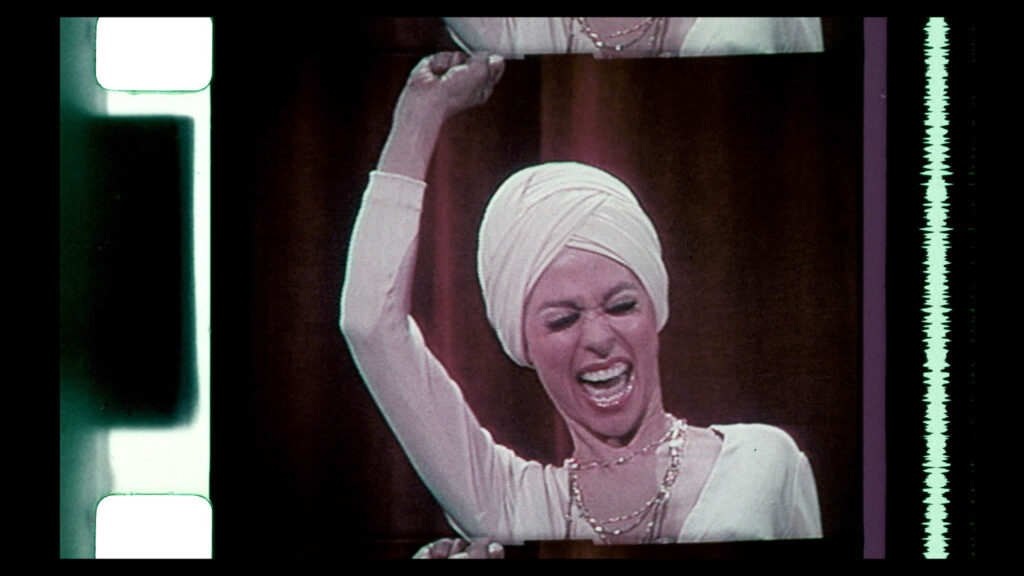
KS: How did you go about deciding what aspects of Rita’s life you included in the film?
MPR: It started with her as a human. From there, we decided on the films and everything else. Of course, there were films that we needed to talk about. We wanted to make sure that whatever she was going through emotionally was central and then we connected it with the films or projects that she was involved in at the time. Maybe there’s a lot of movies or projects that aren’t there, especially music-wise. We don’t touch that in the film, although we hear her singing in the film. We wanted to connect from the emotion of the projects in her life so, of course, we needed to have West Side Story because she won an Oscar with that. Also, because we wanted to talk about how she feels when that scene of her almost getting raped in West Side Story brings her back to when she was raped. It was the same with the Marlon Brando movie [The Night of the Following Day]. It’s not a great movie and not too many people know it, but because it had something to do with her emotions and in her life, that’s why it’s in there. That happened with the projects that we decided to choose for the film.
IVD: I think that it was a great juggling job. There’s some things that weren’t covered because it’s a 70 year career to be covered in a 90 minute film. What Mariem says, I think it’s one of the things that makes this film interesting because biopics are usually very standard in terms of the way they’re told. Here, that emphasis that Mariem put into Rita’s human side, parallel to all the political importance, the historic issues, women issues, and immigrants issues, are very much part of telling her life. At the same time, there are important issues to be discovered. I think that’s what needed to be in the film so whatever was left out, which is not a lot, it’s because they didn’t add to that story.
MPR: Adding to what Ilia said, there was a moment when we decided, mostly Ilia and I, we’re talking about it as Puerto Ricans and as women. We decided it is important to talk in this movie from a woman’s perspective. It’s not just the biopic on Rita but it’s also a study on what it means to be a woman in the United States throughout a 70-year career. We’re seeing society in the United States, especially if you’re a woman and especially if you’re Latina. So that was our main theme throughout the whole movie. Whatever films or themes that she talked about had to do with what we needed to have in the movie. For us, it was important to show what it means to be a woman in the United States. [Racism and sexual assault] happened to this woman who has all of this great success and look what she went through. This is what women go through. All of them–not just a few–all of them.
Rita Moreno: Just a Girl Who Decided to Go for It is part of the American Masters TV series on PBS and will premiere later this year.
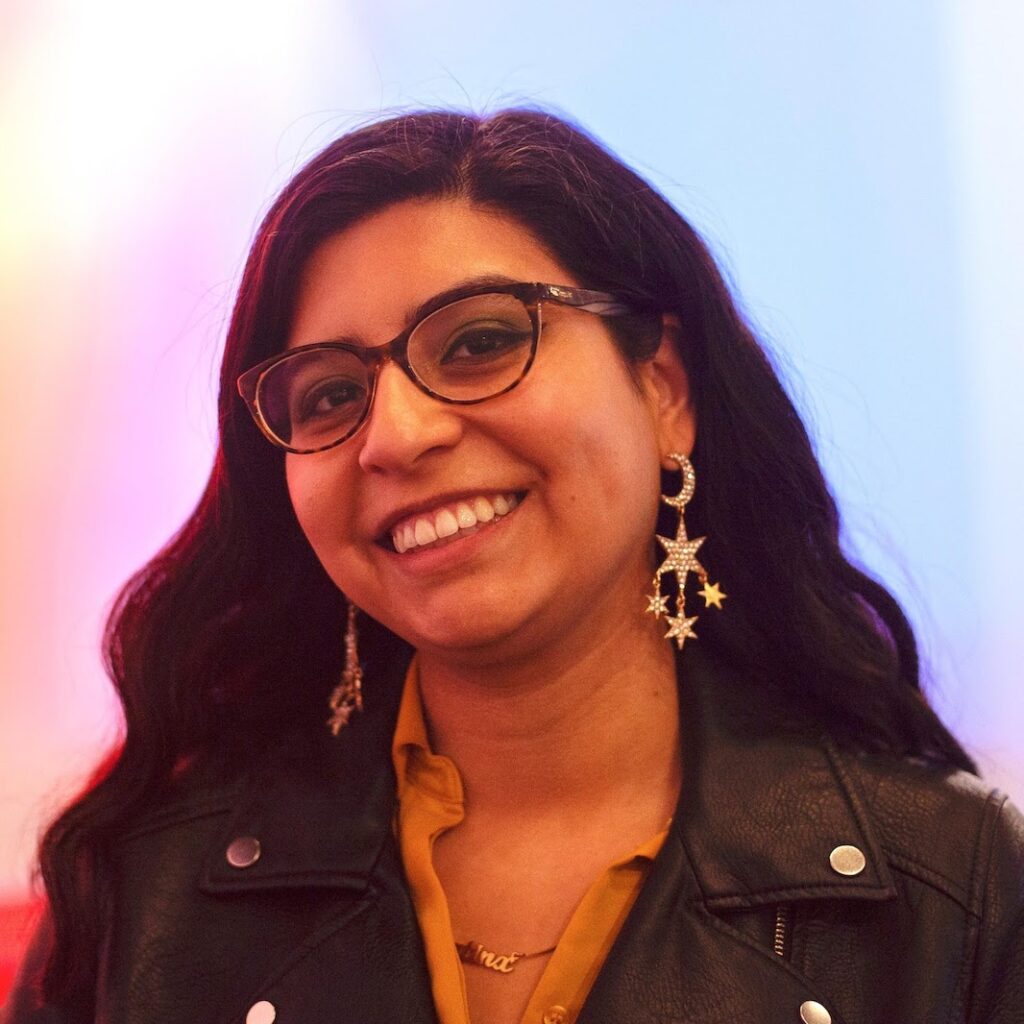
Kristal Sotomayor is a bilingual Latinx freelance journalist, documentary filmmaker, and festival programmer based in Philadelphia. They serve as Programming Director for the Philadelphia Latino Film Festival and Co-Founder/Journalist of ¡Presente! Media Collective. In the past, Kristal has written for ITVS, WHYY, AL DÍA, CineSPEAK and Autostraddle. They are a 2020 and 2021 Sundance Press Inclusion Initiative awardee.

Sorry, the comment form is closed at this time.